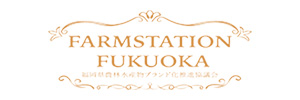Sato Shoko’s Travel Report Local Seafood and Local Shoyu Brewers
Buzenkai Hitotsubu Oysters and Matsunaka Shoyu
Matsunaka Shoyu Honten in the Nakasone district of Kokuraminami is a soy sauce brewery that has been in operation since 1894. We visited the historic brewery with culinary expert Shoko Sato, who introduces a Buzen Sea oyster dish made with Sone no Shizuku, the brewery’s completely additive-free soy sauce.
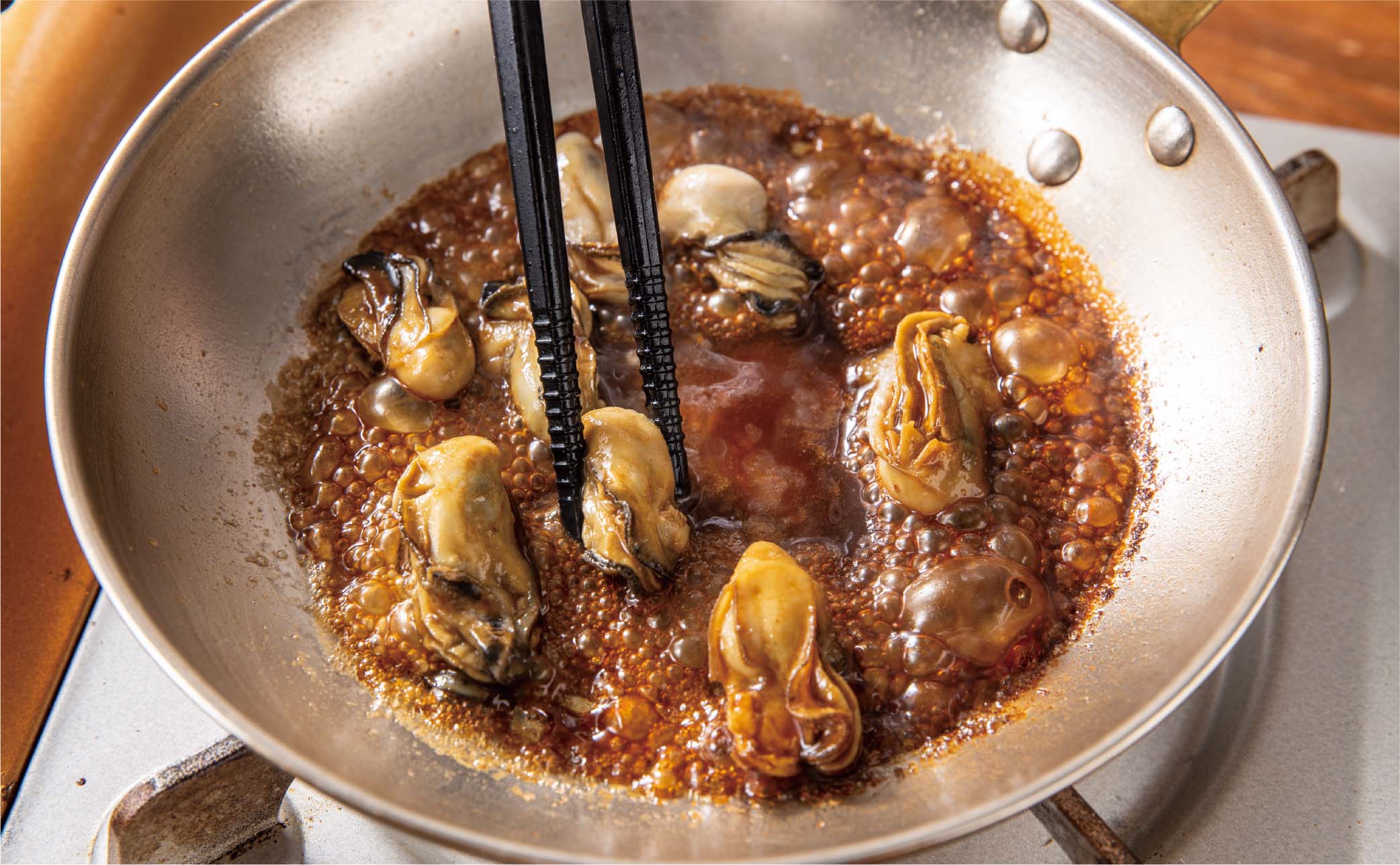

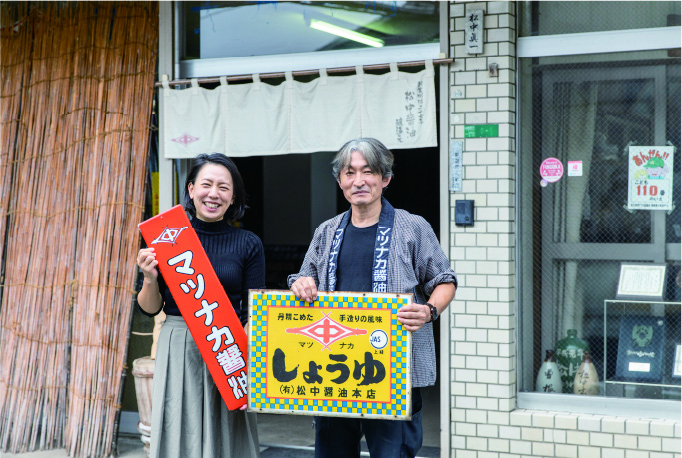
https://www.matsunaka.co.jp/

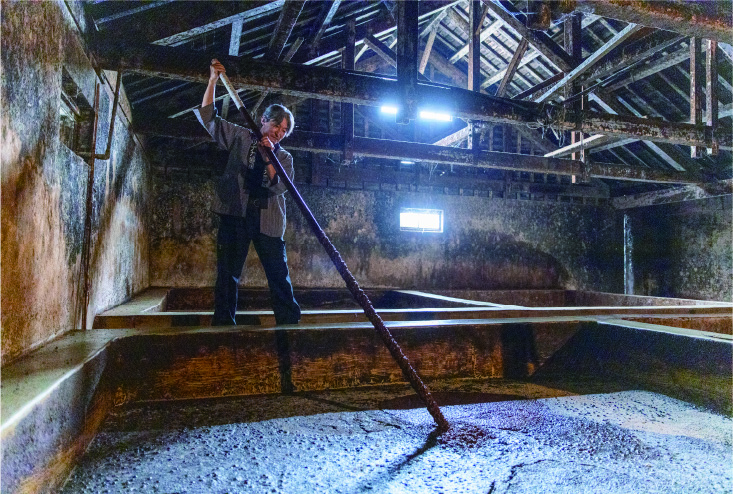

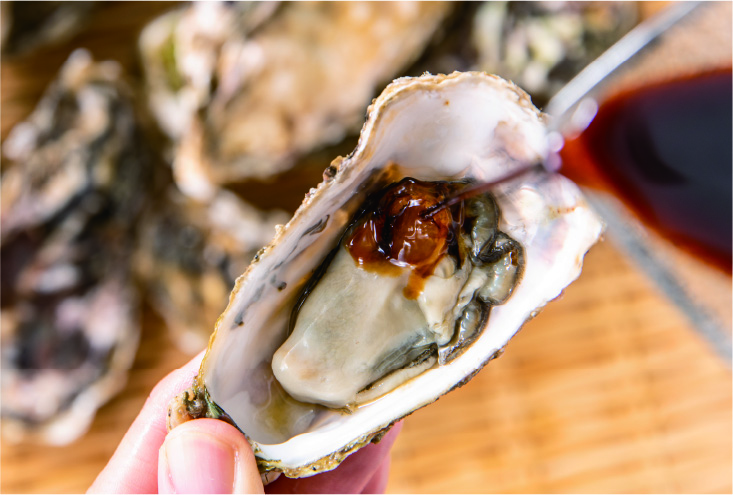
Oysters and soy sauce elevate each other’s flavor
Matsunaka Shoyu Honten is located not far from the Sone tidal flat in an unassuming town block just off the truck-heavy prefectural road. The brewery seems like it could still be in the last century. A big sign on the outside wall says “Matsunaka Shoyu” written in old-fashioned script. Owner Shinji Matsunaka, the fourth-generation family brewmeister whose great-grandfather Tatsunosuke Matsunaka started the brewery in 1894, comes out to greet us. “We are still using the same building from the brewery’s founding. The shoyu brewer’s koji mold lives here, and gives our soy sauce its unique taste,” he says. Upon closer examination, not only the columns and beams but also the casually placed tools appear well-tested by time.
“We use a natural brewing technique that hasn’t changed at all since the brewery’s founding. We brew according to the natural temperature changes through the four seasons, which requires a maturation period of at least two years,” says Matsunaka. The moromi made in winter ferments vigorously in the hot summer. The maturation is further aided by koji mold, yeast, and lactic bacteria, deepening the soy sauce’s distinctive aroma and flavor.
Among the brewery’s many soy sauce products, one is quite special—Sone no Shizuku—a “true brew” dark honjozo made completely without additives—just soybeans, wheat, and salt. It is made by pressing and heating well-aged moromi—soy sauce at its raw inception. “Because we adhere to using no additives, we don’t add the sweetener that Kyushu soy sauce is known for. So, it tastes just like the soy sauce that was handmade in the olden days,” Matsunaka says proudly.
The taste is full-bodied, yet clean. We can see how it brings out the best in the premium oysters from the Buzen Sea, with their plump tenderness and smooth, velvety finish. The idea is to keep oyster dishes simple to emphasize their exquisite combination with the soy sauce.
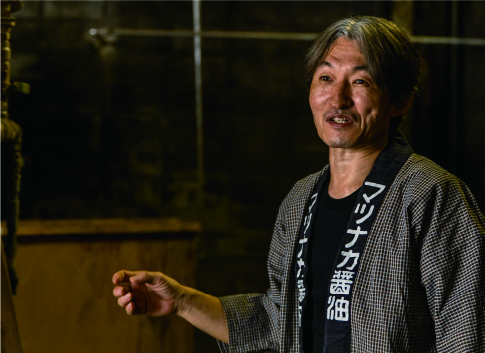
Buzen Sea oysters + Matsunaka Shoyu Pan-fried oysters with butter, sake and soy sauce
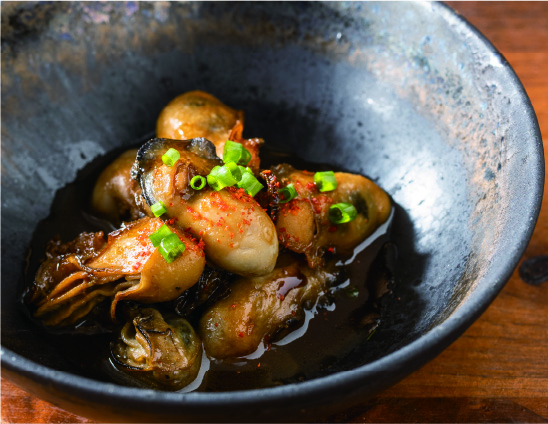
Ingredients (for two)
Oysters: 8 (in shell)
Butter: 10 g
Sake: 1 tablespoon
Soy sauce (Sone no Shizuku): 1 tablespoon
Scallions: to garnish
Ichimi red pepper powder: to taste

How to Prepare
1. Hold the shell with the bulge toward the bottom, and with the seam facing you, insert the oyster knife in the upper right corner, open the shell, and shuck the oyster.
2. Shake the shucked oyster in water to remove any pieces of shell or grit.
3. Put butter in a frying pan and heat. Add the shucked oysters, fry, add sake and simmer briefly, then add soy sauce and simmer just enough to infuse the oysters with flavor.



